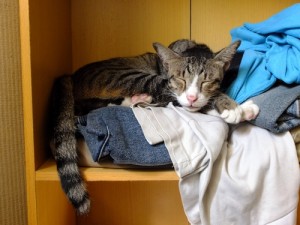

Our fundraising goal for 2020
 TWD Inc. specializes exclusively in textile recycling. The charity bins we service state very clearly that they only accept used clothing, jackets, shoes/boots, belts and linens. They also clearly state that household and other items are not accepted, and yet we collect an average of 2 million pounds of such items in our bins annually.
TWD Inc. specializes exclusively in textile recycling. The charity bins we service state very clearly that they only accept used clothing, jackets, shoes/boots, belts and linens. They also clearly state that household and other items are not accepted, and yet we collect an average of 2 million pounds of such items in our bins annually.
Most textile recyclers just take household items to the dump, but we try to do what we can to divert those items responsibly. The market has made this possible by inspiring what we call ‘bric-a-brac graders’ who collect miscellaneous items by the trailer load, sort them in facilities, and sell what they can to the various recyclers equipped to manage them. This opens up a whole new tier of employment for the province of Ontario that we are happy to support.
This also reduces dumping costs considerably, which benefits everyone, including our overburdened landfills.
Due to the mass quantity of these miscellaneous items, it is easier for us to provide them to a grader that handles large quantities. Our logistic facilities are not equipped to allow for individual pickers to sift through for small scale collecting.
Chatham, Ontario and surrounding areas have opened up a unique opportunity, whereby some of this bric-a-brac can be used by a local grassroots community group called Cat Chance Caleb’s Fund that raises money by auctioning these items to fund their humane trap-spay-release project aimed at reducing feral cats, and reducing the number of cats euthanized every year. Did you know that one feral cat and her offspring give birth to 420,000 cats over a 7 year period? Chatham has a particularly high feral cat population so they are working hard to address this need.
TWD Inc. is dedicated to economically supporting the areas we service by hiring drivers/collectors locally as well as leasing logistic facilities locally. This allows for things like repairs and other services to be paid for locally as well.
Our new Chatham operation happens to also have the perfect logistics to allow Caleb’s Fund to find all the bric-a-brac they can use, before we send it to the grader, which is less costly than dumping (but still costly). We are grateful for their help, as they are saving our clients’ dumping fees. Through their efforts, Caleb’s Fund is also contributing to landfill reduction.
This is a perfect example of how family businesses like ours can embrace and assist local residents that are good neighbours. These are the community-driven projects that make us proud to do what we do.
Please see our recent blog post on how used clothing donation bins are good for your community for more information on ways we’re supporting the community.
Our service is free, and fully insured. We look forward to helping Chatham increase its waste diversion rate and helping feral cats in the community. The best part is, the charity bins we proudly service reduce landfills through their recycling efforts and the proceeds offer support to other local charities that help Canadians at risk of falling through the cracks.
For more information, you can find Cat Chance/Caleb’s Fund Auction on Facebook.